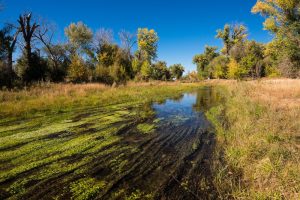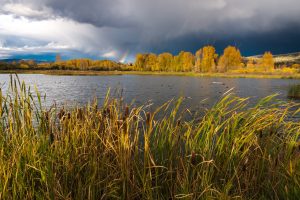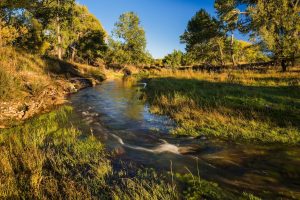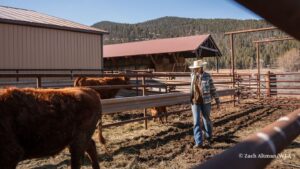Conservation Finance Series – Final Thoughts
Share
More from this series

Photo: Erika Peterman
Conservation Finance Series—Part Eight of Eight
By Jane Rice, WRA, Inc. and Ben Guillon, Conservation Investment Management
This post concludes our conservation finance series, which has provided an overview of various ways landowners can get paid for implementing stewardship practices on their land. The series covered approaches ranging from conservation easements to carbon crediting and wetland mitigation banking. Each post addresses anticipated revenues and costs, risks, policy and legal frameworks, project examples and a checklist for landowners to evaluate opportunities on their property. This final post of the series presents conservation finance highlights and outlines how and why landowners may choose to evaluate the conservation finance potential of their land.
To review, conservation finance payments are typically made for improved conservation outcomes that are provided above and beyond what would have existed in a business-as-usual scenario, and these outcomes are ensured over the long-term. Some conservation finance approaches, like wetland mitigation and species conservation banking, operate under regulatory frameworks. Carbon crediting, habitat exchanges and payments for watershed services can occur in both regulatory and voluntary markets.
Conservation finance approaches can offer significant financial opportunities for landowners. Wetland credit prices can reach $1 million and species credit prices can reach $200,000. Carbon credits sell for about $12 per credit in the compliance market, but more credits are generated per acre than wetland or species banks, potentially resulting in multi-million dollar carbon projects. Conservation finance revenues can enable landowners to diversify income streams and may result in tax benefits as well. Conservation finance approaches are usually compatible with farming, ranching and timber management.
All this being said, the costs and risks associated with conservation finance approaches cannot be understated. For example, in some states, developing a mitigation bank can cost more than $1 million upfront, barring ongoing monitoring and management costs. Even the simplest conservation finance approach will likely take at least a couple of years to implement, if not three to five years. Time delays depend on the complexity of the enterprise and the need for regulatory approval throughout the development process. Most conservation finance approaches require a long-term commitment, if not a perpetual conservation easement, which limits future development opportunities and can reduce the appraised value of the land. Lastly, market, regulatory and environmental conditions change, which can impact the conservation finance outcomes for better or for worse. Given these costs and risks, landowners must thoroughly evaluate a conservation finance opportunity, ideally with professional assistance, before investing significant time and resources or making a long-term commitment.
While the specific parameters will depend on the conservation finance approach of interest, the following critical factors must be considered when determining the suitability of each approach on an individual’s land:
- Size of the property;
- Location of the property;
- Quantity and quality of natural resources on site;
- Existing encumbrances on the property;
- Market conditions, development pressures and regulatory context in the region.
Landowners who are interested in pursuing a conservation finance opportunity on their land will most often benefit from an environmental assessment conducted by professional consultants. If their interest is in carbon crediting, a carbon project developer can quantify the credit potential and financial projections for their property. Typically, a high-level assessment can be performed remotely, sometimes free of charge, while a more in-depth evaluation will require a site visit. The in-depth assessments are likely to include on-site inventories, growth modeling, credit yield calculations and financial projections.
Similarly, wetland mitigation and species conservation bank developers can determine the potential value of a bank on a landowner’s property, either through an initial desktop analysis or a more rigorous evaluation involving site visits. These valuations are typically based on the natural resource potential of the property, a quantification of credits, and mitigation bank market conditions and credit price trends particular to the region. This information is not always publicly discernible, which is why engaging an experienced consultant to provide the analysis and professional opinion can be advantageous.
In a somewhat different vein, if a landowner is interested in a conservation easement, their local land trust would be in the best position to discuss opportunities with them. The land trust will evaluate their property based on required due diligence reports, relative to their predetermined selection criteria and the preferences of third-party funders, as appropriate.
Landowners who have no interest in implementing a conservation finance project but wish to sell their land may also benefit from an understanding of the potential conservation finance values on their property. Landowners who have some indication that their land is rich in conservation values, in particular, may have an environmental assessment conducted as part of their property appraisal process. If the conservation finance opportunity, such as a wetland mitigation bank, proves to be the most valuable potential use of the land (i.e. highest and best use) it will be used as the basis for the appraisal. Therefore, an understanding of potential conservation finance opportunities can greatly influence real estate transactions to the benefit of the landowner.
If you have any questions about the conservation finance opportunities presented in this series, or about the process for evaluating these opportunities, you are welcome to contact us.
WRA, Inc. offers professional consulting services in plant, wildlife, and wetland ecology, water resources engineering, regulatory compliance, mitigation banking, conservation finance, environmental planning, GIS, and landscape architecture. WRA is a national leader in the wetland and species banking industry and recently developed the largest bank in the country. WRA’s conservation finance team is pioneering new monetization approaches across carbon, water, species and ecotourism markets.
*The views and opinions expressed in this article are those of the author(s). Publishing this content does not constitute an endorsement by the Western Landowners Alliance or any employee thereof either of the specific content itself or of other opinions or affiliations that the author(s) may have.*
Please keep an eye out for these and other WLA blog posts on our Facebook page and in the WLA newsletter.
As shutdown breaks records, a reminder that Western landowners and working lands need a functioning federal government
By WLA |
Western Landowners Alliance Statement on Colorado Stream Access Laws
By WLA |
Join WLA to stay up to date on the most important news and policy for land stewards.
Become a member for free today and we will send you the news and policy developments critical to the economic and ecological health of working lands.
WLA works on behalf of landowners and practitioners throughout the West. We will never share your contact information with anyone.
©2025 Western Landowners Alliance • PO BOX 27798, Denver, CO 80227 • 505.466.1495
Western Landowners Alliance is a 501 (c)(3) non-profit recognized by the IRS.
Tax ID: 46-1346488









